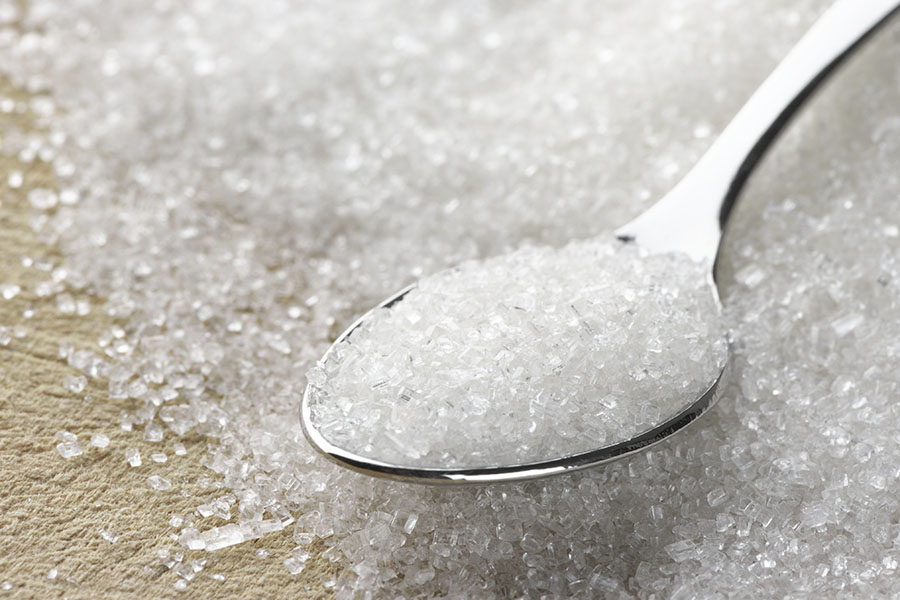New technology allows reduction in sugar intake
Tuesday, December 15, 2020
By Nurhan Dunford, FAPC Oil/Oilseed Specialist
We get two types of sugar in our diet –- naturally occurring sugar in foods we consume, such as fructose from fruits and lactose from milk, and sugar that is added to foods during processing or preparation.
According to the American Heart Association, American adults consume too much sugar. The average is about 77 grams of added sugar per day –– three times more than the recommended 25 grams per day for women and two times more than the recommended 36 grams per day for men.
It is not surprising the sugar consumption data for children is worse. American children consume about 81 grams of sugar per day, which is much higher than the recommended amount of 25 grams per day for children between 2 and 18 years old. In a typical American diet, about half of the added sugar comes from beverages, with soft drinks leading in consumption.
Scientific studies indicate excess sugar consumption may lead to cavities and tooth decay, inflammation, overeating, increased waist size, weight gain, skin aging and wrinkles, and the increased risk of many chronic diseases including cancer, diabetes and coronary heart disease.
The good news is consumers are aware current sugar consumption level is too high. A recent survey conducted by the International Food Information Council study revealed about 80% of respondents said they were trying to limit or avoid sugary foods.
We see more and more products with “reduced sugar,” “no added sugar” and “sugar free” claims on the grocery store shelves. According to the consulting firm Innova Market Insights, the Baby Boomer generation is driving the sugar reduction trend.
Added sugar reduction in most food formulations (which is the key for decreasing sugar intake) is achieved by replacing sugar with sugar substitutes. Food industry utilizes synthetic or plant derived sweeteners to reduce sugar and calorie content of the products. The amount of sugar used in a formulation depends on the desired flavor profile of the end product and the sweetness intensity of the sweetener used.
The taste of sucrose, which is the sugar used in foods for decades, is the benchmark for sweet taste. Not only the sweetness intensity, but also onset and lingering time of the taste is important for delivering a desirable flavor profile. For example, sucralose is about 600 times sweeter than sucrose and has a delayed sweetness onset that lingers, while acesulfame potassium (Ace K) is about 200 times sweeter than sucrose and has a quick sweetness onset that disappears quickly and leaves a metallic aftertaste.
Many consumers are looking for natural products. Sweeteners from the stevia plant and monk fruit had 13% and 21% average annual market growth globally between years 2014 and 2018.
Sugar substitution in food formulations is challenging. Most of the sugar substitutes approved for food use by the Food and Drug Administration do not provide all the calorie, flavor profile and functionality requirements necessary to replace common sugar in a product. Most of the high intensity sweeteners lower calories in the foods at the expense of desirable flavor profile, optimal taste performance, mouthfeel, sweetness quality and sometimes functionality.
Scientists and food manufacturers have been working on new technologies to allow for sugar reduction in foods for many years. Recently, Nestle, one of the largest multinational food manufacturers, announced a new product that helps to reduce added sugar amount in the products. According to the company, this new product, which also is referred to as “hollow sugar” or “structured sugar,” is still common sugar but has a different structure.
The normal sugar we use comes in the form of solid crystals that dissolve slowly in water. Amorphous sugar, like cotton candy, dissolves faster in the mouth and gives out a burst of enhanced sweetness. Nestle’s new product is based on this principle –– producing amorphous sugar to replace its crystalline counterpart.
The production process is simple and includes a mixture of sugar, milk powder and water that is spray dried to get amorphous particles that are porous. Hence, the final product is normal sugar encapsulated in milk powder, which stabilizes the dried sugar and minimizes stickiness.
Nestle claims the product is made with all-natural ingredients and can reduce sugar up to 40% in confectionary products, such as chocolate. The first application of the hollow sugar was the “Milkybar Wowsome,” which is a chocolate bar containing 30% less sugar than the original formulation.
I am sure you are asking yourself, “Is this the magic solution to sugar reduction in foods ending the search for sugar alternatives?”
I am afraid the answer is no. Just like many other sugar substitutes, this product has its limitations. The hollow sugar is only stable in dry products. For example, this new product cannot be effective in beverages because, as mentioned earlier, increased sweetness from amorphous sugar comes from its faster dissolution in the mouth. In beverages or other liquid products, hollow sugar would dissolve before the product is consumed, and the consumer would not get the burst of enhanced sweetness in the mouth.
Fortunately, there are many other innovations in the pipeline. FutureBridge, a consulting company based in Netherland, predicts new bioprocesses developed by start-up companies have great potential for producing low-calorie sweeteners with competitive price advantage. New processes being developed to reduce the cost of large volume production of xylitol, tagatose and stevia are expected to lower the price of these sugar substitutes and make them more accessible to the consumers.
In the meantime, we can develop healthier food selection habits to control our sugar intake. Considering half of the added sugar we consume comes from beverages, replacing soda with water, checking the food ingredient labels and choosing unsweetened fruit juices can significantly reduce sugar intake. Selecting fruits canned in water or natural juice rather than fruits in syrup and adding fresh fruits to cereals instead of table sugar could further reduce sugar consumption without compromising sweet taste.

